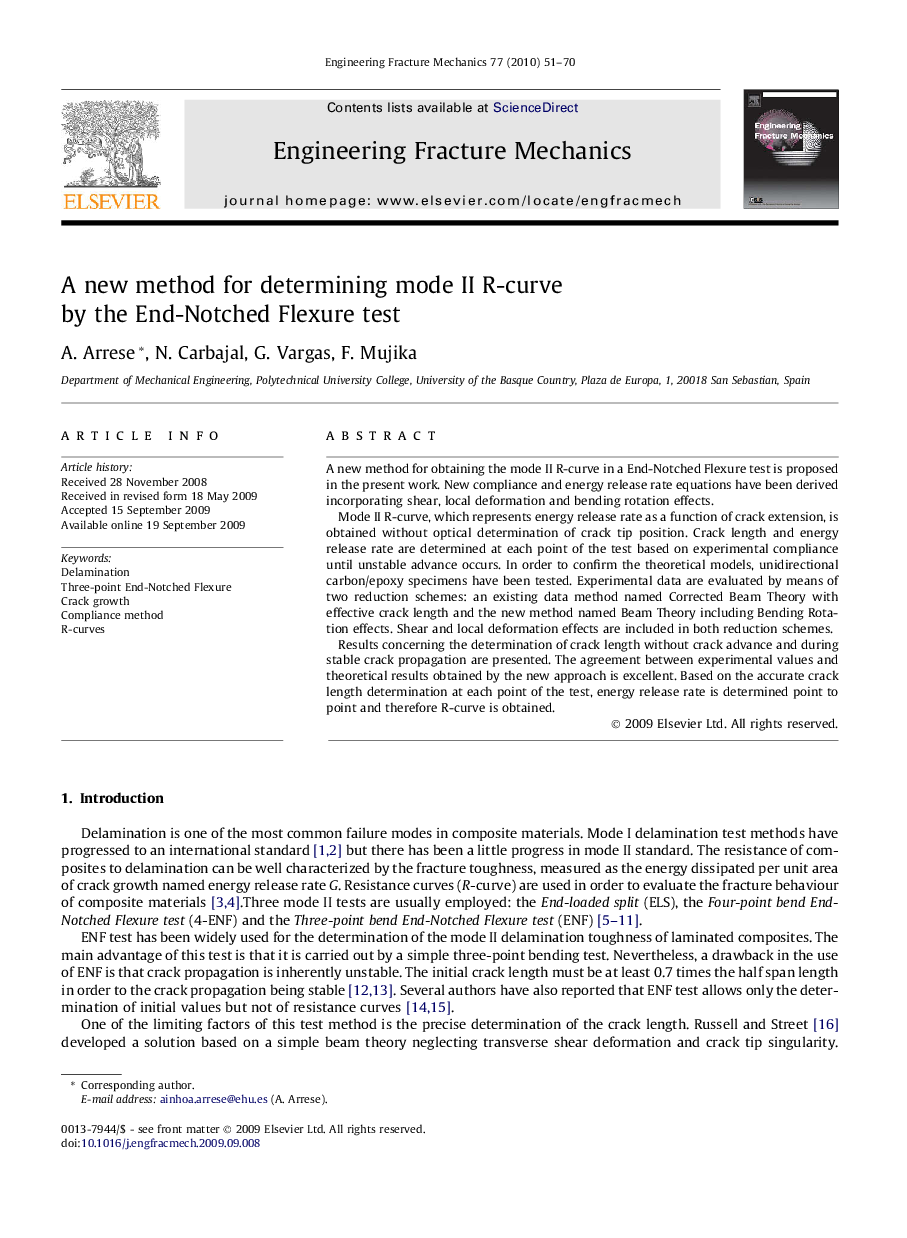| Article ID | Journal | Published Year | Pages | File Type |
|---|---|---|---|---|
| 771089 | Engineering Fracture Mechanics | 2010 | 20 Pages |
A new method for obtaining the mode II R-curve in a End-Notched Flexure test is proposed in the present work. New compliance and energy release rate equations have been derived incorporating shear, local deformation and bending rotation effects.Mode II R-curve, which represents energy release rate as a function of crack extension, is obtained without optical determination of crack tip position. Crack length and energy release rate are determined at each point of the test based on experimental compliance until unstable advance occurs. In order to confirm the theoretical models, unidirectional carbon/epoxy specimens have been tested. Experimental data are evaluated by means of two reduction schemes: an existing data method named Corrected Beam Theory with effective crack length and the new method named Beam Theory including Bending Rotation effects. Shear and local deformation effects are included in both reduction schemes.Results concerning the determination of crack length without crack advance and during stable crack propagation are presented. The agreement between experimental values and theoretical results obtained by the new approach is excellent. Based on the accurate crack length determination at each point of the test, energy release rate is determined point to point and therefore R-curve is obtained.
